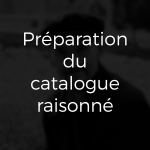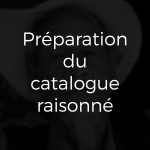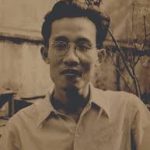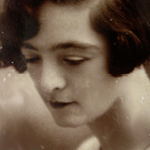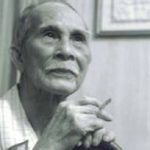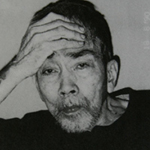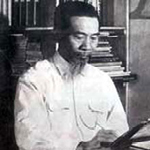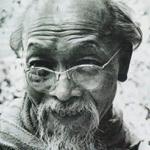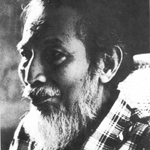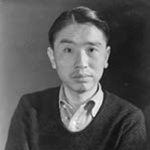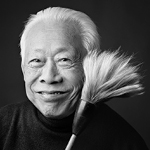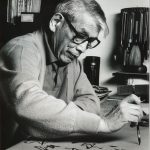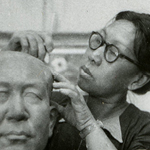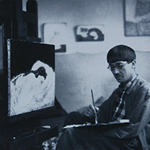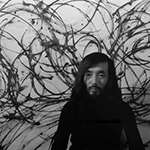SANYU
Sanyu, whose real name was Chang Yu, was born in 1901 in Sichuan Province, China. His father, an animal painter specialising in horses and lions, taught him the basics of his art.
Supported financially by his older brother, Sanyu followed the teachings of Zhao Xi, a highly renowned master calligrapher, at home and subsequently went to the University of Shanghai. He completed his training with a graduation programme that led him successively to Japan, Germany and France.
Sanyu moved to Paris in the 1920s and, unlike the vast majority of his contemporaries, did not return to China. He developed his personal explorations in the Parisian circle where he felt most stimulated. This explains the belated recognition of his work in Asia.
Leaving behind the traditional constraints of a formal artistic training, he sketched portraits of his entourage from life, painting in both oils and watercolour. Nevertheless, his favourite theme was always nudes, having been introduced to them by the Académie de la Grande Chaumière, where live models were used. This discipline was still not widespread and accepted in China at the time, and the artistic freedom of Paris opened up new horizons for the artist. His art flourished, resulting in a wide range of sketches that, according to traditional Chinese calligraphy, emphasised “the subjective use of features to express the appearance and spirit of the subject” instead of simply reproducing the shape of it. These calligraphic nudes were central to his work and he applied himself assiduously to them during the 1920s and 30s. It was really during this period that his style became more assertive and distinctive, enabling him to shed his traditional Chinese straitjacket and bring his art in line with modernity.
While some artists like Foujita, who were hard-working but also worldly, were worried about promoting their work, the humbler-minded Sanyu focused more on the search for technical and aesthetic excellence, and on expressing the simplicity of feelings through lines that became increasingly pure and limpid. Sanyu thus gradually fell into oblivion.
Thanks to works that have resurfaced on the market in the last twenty years, Sanyu’s talent has now burst back into the public spotlight. His art is now lauded by critics, and collectors see it as an unparalleled synthesis of the spirit of Eastern and Western forms.
Our evaluation enables us to assert the pictorial and technical quality as well as the condition of a work before giving an evaluation of its historical and cultural interest. Advice may be given in terms of additional research to be conducted and also an estimate, whether the work is intended for auction or to be sold through another means.
Are you the owner of archive material or additional material about Asian painters, or would you like one of your works assessed? Contact us
More information by clicking on the photos
Are you the owner of archive material or additional material about Asian painters, or would you like one of your works assessed ? Contact us
